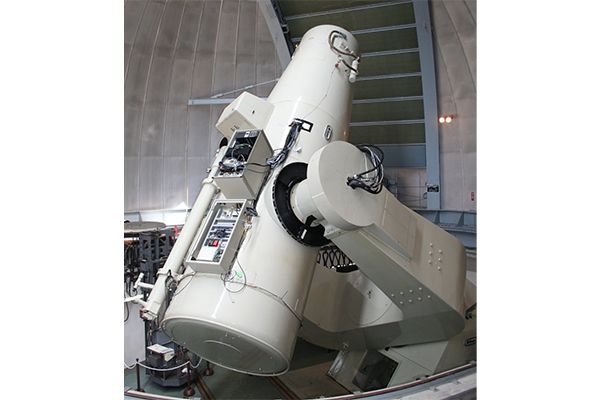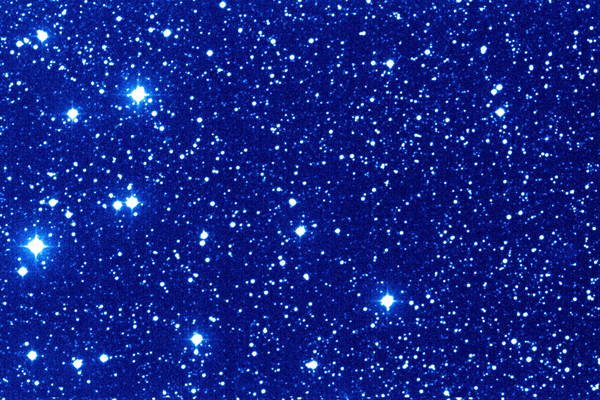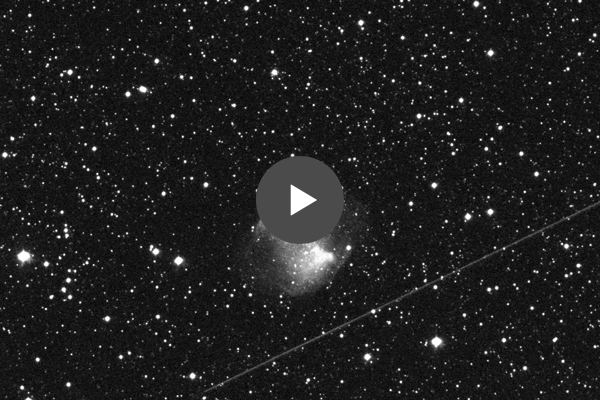News Release
Kiso Observatory, University of Tokyo, commences full operation of 'Tomo-e Gozen,' a new observation system equipped with 84 Canon ultra-high-sensitivity CMOS sensors
TOKYO, September 30, 2019—Canon Inc. announced today that 84 of the Company's ultra-high-sensitivity CMOS sensors provided to the University of Tokyo Institute of Astronomy's Kiso Observatory have been employed as part of "Tomo-e Gozen," a new observation system on a 105 cm Schmidt telescope that will commence full operation from October 2019.

The 105 cm Schmidt telescope equipped with the Tomo-e Gozen camera

The 84-CMOS-sensor array that makes up Tomo-e Gozen's wide-field video camera
* Images courtesy of Kiso Observatory, the University of Tokyo
The main facility of Kiso Observatory, a 105-cm-diameter Schmidt telescope, has been used by astronomers for research activities since 1974. The Tomo-e Gozen system comprises an astronomical wide-field video camera and AI software and was newly developed with the aim of understanding the transient universe. Since 2014, Canon has provided the University of Tokyo with ultra-high-sensitivity CMOS sensors and cooperated in the development of the Tomo-e Gozen system. The camera part of Tomo-e Gozen was completed in April 2019 and, following a half-year engineering period, will commence full operation in October.
The wide-field video camera of Tomo-e Gozen uses Canon 35mm full-frame ultra-high-sensitivity CMOS sensors. While with typical image sensors noise tends to increase along with increases in pixel size, the Canon sensor features large 19µm x 19µm (micrometers) pixels and realizes ultra-high sensitivity with reduced noise. The 84 sensors of Tomo-e Gozen, with approximately 190 million pixels in total, obtain ultra-wide-field video data covering 20 square degrees* of the sky.
The Tomo-e Gozen system—which can obtain a variety of ultra-high-sensitivity and wide-field videos of space—will make possible the observation of scientifically important phenomena, such as supernovae explosions just after they occur and small asteroids that present a risk of colliding with the earth. The system is also expected to contribute to understanding the origins of life and the universe.
Canon will continue to support advances in science through the technological prowess it has cultivated as a leading imaging company.
- *Square degrees are a unit used in astronomy to denote an area of sky. An area of 20 square degrees is equivalent to that of about 84 full moons.
Data obtained by Tomo-e Gozen
Comment on the CMOS sensors used in Tomo-e Gozen
"We were surprised at the high sensitivity and low noise of Canon's CMOS sensor, and decided to adopt it for Tomo-e Gozen instead of CCD sensors, which are widely used in astronomy. Unlike CCD sensors widely used in astronomy, the Canon CMOS sensors do not require cooling to suppress noise. Thus, Canon's CMOS sensors are indispensable for video observations of faint signals from the sky. We have been developing Tomo-e Gozen with Canon engineers on hand through active discussions with us directly. Canon has experience in such areas as light receiving surfaces and sensors with large pixels, and I appreciated the depth and breadth of their research. I'm looking forward to more characteristic product development from Canon from here on out."
— Shigeyuki Sako, Assistant Professor, Institute of Astronomy, School of Science , the University of Tokyo
- *Institute of Astronomy (IoA), School of Science, the University of Tokyo website: http://www.ioa.s.u-tokyo.ac.jp/index.html
- **Kiso Observatory website: http://www.ioa.s.u-tokyo.ac.jp/kisohp/top_e.html


